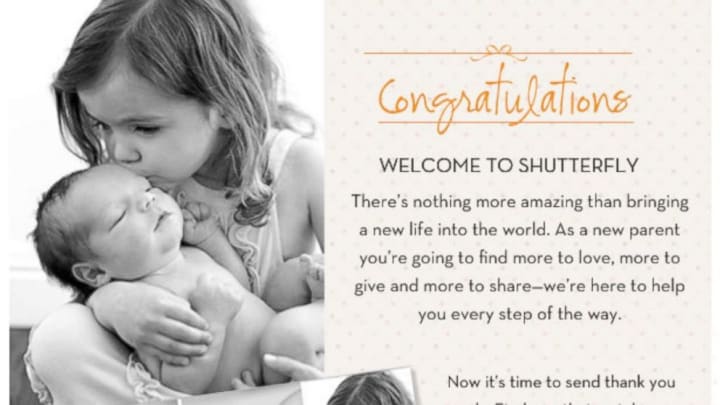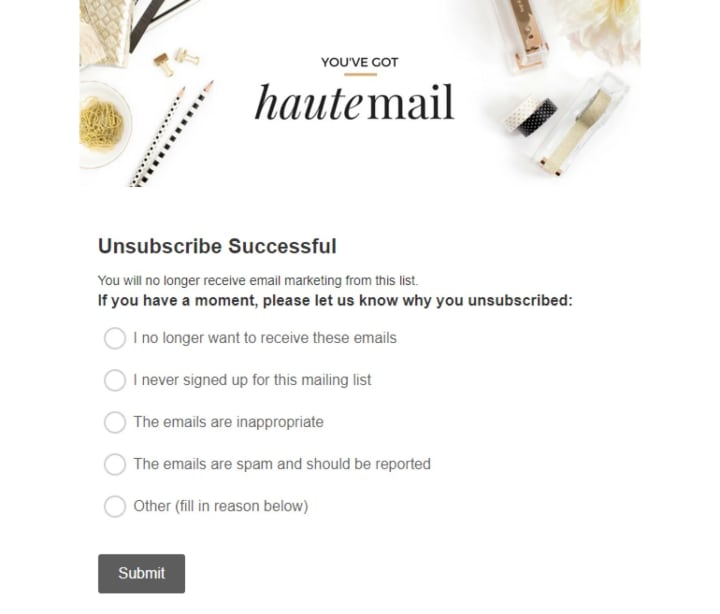How to Reach Customers via Email Campaigns and Other Communication Channels
Email Campaigns to Reach Customers: What to Do & Avoid Doing

Obtaining a potential client’s contact is a significant achievement for company marketing. However, the real challenge lies ahead: the brand initiates a campaign that should persuade the user to make a purchase or take another desired action. Sometimes, marketing communications miss the mark, resulting in adverse effects — customers disappearing or even blocking the company’s account and reporting spam.
Therefore, email, messenger, Push, or SMS campaigns must be appropriate and non-irritating. It’s crucial to maintain a human touch and avoid being pushy in communicating with the audience. We’ve prepared harmful advice for you on how to make your email campaign unbearable.
Write to the client frequently
Configure your email service to send reminders about your company to the client every day, or better yet, several times a day. Otherwise, your brand will be forgotten, and nothing will be purchased. Daily emails are the key to building trust and brand recall.
Now, seriously
Every day, we receive dozens of messages from various sources, causing significant overload. Not all emails are opened: 40% of users claim to have an average of 50 unread messages in their inbox. They are unlikely to be pleased if the current information flow increases. It is optimal to send email newsletters from once a month to two to four times a week. The frequency depends on the advertising campaign’s goal. For example, sending emails more often before a major event is a normal practice. However, if you send a message urging “buy” every day, users are unlikely to be delighted.
Also, the frequency of sending email newsletters to clients is determined through testing. When increasing or decreasing the number of emails, Open Rate and CTR indicators are checked: if they deteriorate, such an email quantity is probably not suitable.
Do not stop the mailing if the customer asked to stop
Your email marketing strategy should be uncompromising. Do not let the user go at any cost. If email communication is not working because the customer does not open the emails, unsubscribes, or says your product is not of interest to them, do not despair.
Engage in omnichannel communication and send messages through all available communication channels, even if the user did not give permission to write to them there. Find them on all social networks. Blocked on Telegram? Move to WhatsApp*. Sent to the blacklist there too? No problem — send messages from another account, or better yet, call several times. The customer will surely appreciate such attention and sooner or later accept your offer.
If you want to use omnichannel marketing correctly, rather than be seen as an intrusive brand, read our article “What is Omnichannel and How It Helps Business” about the proper application of this method and its benefits.
Now, seriously
Persistence is good in moderation. There is the theory of seven touches, according to which a customer usually buys after seven reminders from the company. And not only through email newsletters but also through other marketing channels, such as advertising. If after such a number of messages/calls from you, the person does not react, it is necessary to stop or try again later.
But it’s worse when a person responds that your offer is not interesting to them, and you continue to persuade them to buy. If it’s an email newsletter from which they unsubscribed, but you sent another email, there is a high risk that it will end up in spam. In other channels, you will be ignored at best, and at worst, blocked, leaving an angry review on the website, and they will also tell acquaintances that dealing with this company is definitely not worth it. Therefore, the text for email newsletters and other brand messages should be as respectful as possible.
Manipulate
Your email message campaign should include more calls to buy right now because it’s the last item in the world. Even better, blame subscribers for everything: that they’re lazy, don’t want to increase their income, engage in sports, change their lives, and so on. Someday these people will definitely come back and thank you for the motivation and that very email that changed their lives for the better.
Now seriously
Manipulations are more likely to be perceived as insults rather than motivation for action. Such messages from brands certainly do not foster trust and pleasant communication.
Send messages at inconvenient times
Receiving an SMS at 5 a.m. or a Telegram message at midnight is so nice, especially when the sound is on your phone. So forget about time zones (geolocations) of subscribers and do not adapt your mailings.
Now seriously
Usually, messages and calls early in the morning or late in the evening are associated with emergencies, but certainly not with advertising. Therefore, a person who was woken up will not be delighted with your offer.
Email messaging is not as critical in inconvenient times as through messengers or SMS. Therefore, for email campaigns, the recommended time is 4:00–6:00 and 17:00–19:00. But, for example, it is not worth writing in Telegram too early or too late.
Don’t respond immediately
If a customer is interested in your offer and responds, don’t even think about reacting quickly — this will only increase interest in your product and create its value. Moreover, everyone understands that the working day of your employees is limited, and there are also weekends.
Now seriously
If a customer receives an online email newsletter and makes a purchase, they need to receive confirmation of payment and order processing quickly. When there is no response for a long time, doubts arise about whether the user has taken the correct actions, whether the payment has gone through, and so on.
It is especially unpleasant if a buyer writes to the company about a problem, but they respond after several hours or even days. If customer support or managers cannot react immediately, it is worth notifying the customer about this. Here, marketing and sales automation, as well as customer service, come in handy. Then, the subscribers’ messages are answered by a prepared letter, which, for example, informs about the response times of managers to user questions. Artificial intelligence is also involved in communicating with the customer, which helps solve customer problems at any time without involving a person. Such technologies are often used by banks in chatbots in applications and on websites.
Don’t personalize
Mass email mailing is the same campaign for all users. Don’t waste resources on personalized and original emails and messages. It is also not worth considering the shopping experience and interests; offer everything at once — perhaps, luck will strike, and the person will become interested. Write to a person suggesting they go to driving school, even though they have had a driver’s license for many years, and convince childless people to buy services from your daycare center.
Now seriously
Email marketing, email messaging, and sending messages through other channels without segmentation and consideration of audience specifics is very bold and naive. Personalization has become an important element in marketing because competition is growing, and customers are more likely to buy from brands that understand and hear them than from companies with “finger in the air” mailings.
Personalized email mailing can increase email marketing revenue by 760%. Therefore, 94% of marketers allocate budgets to collect customer data to make as pinpointed offers as possible. For example, such an investment could be a CDP platform, where all user information is collected, analyzed, and managed. In Altcraft Platform, data work is done in one window, which speeds up the marketer’s work.
For example, here’s an example of a failed newsletter from Shytterfly. They massively congratulated women on the birth of their child by sending an automated message to everyone. This caused active outrage among subscribers.


Make unsubscribing complicated
Don’t give the customer a chance to unsubscribe. To make your email campaign work, collect customer emails from various sources. In this case, you can’t just let the user go. Let unsubscribing become a difficult challenge that they won’t want to undertake. Make the unsubscribe link inconspicuous or remove it altogether, and simply ignore the customer’s angry messages to support. With time, they will come to terms and change their minds.
Now seriously
Creating an email campaign without a well-thought-out unsubscribe option is a sure way to spam complaints. Customers will not tolerate coercion, and such emails will cause irritation. Many spam complaints from subscribers will lead to a decrease in your domain reputation and inclusion in blacklists. Even worse is to drive the customer to complaints to the Federal Antimonopoly Service about illegal mailing. Then the company may be fined according to the Federal Law “On Advertising” from 100,000 rubles. Therefore, respect your subscribers and leave them the right to leave.

Forget about error checking and device adaptation
The action button doesn’t work, the layout is messed up, you misspell “в течение” for the hundredth time, and reading emails on a smartphone is impossible — such things happen. Customers will understand and forgive. After all, what matters is the content, not the design. So send out the mailing as soon as possible without unnecessary checks. Time is money.
Now seriously
75% of users claim they mostly use smartphones to check email. Therefore, adapting emails for mobile devices is important and necessary to avoid losing customers.
Text errors primarily affect your brand reputation. If you don’t care about correctness and don’t check mailings, it shows disrespect to your audience. Non-working buttons or links are likely to lead to a loss of conversions and loyalty. Thus, the customer’s path becomes more complicated, and not everyone will search for your lucrative offer on the website if it’s not sent from the email. Errors irritate and reduce the effectiveness of marketing campaigns.
Summary
Email marketing remains relevant, like other channels for sending messages. Brands actively launch mailings, but sometimes they begin to irritate subscribers who unsubscribe, complain about spam, lose trust in the company, and stop buying. And even turn to regulatory authorities to punish annoying senders. Users are annoyed by too frequent emails and messages, persistence when the company doesn’t stop when asked to unsubscribe. Also, manipulations in texts, inconvenient timing, delayed responses if the customer still reacts to the campaign’s call. A great way to annoy customers is to disregard their needs and preferences, that is, not to provide personalized content in mailings. And the absence of unsubscribe options or its complexity can be a reason for a spam complaint.
* Product of Meta, a company recognized as an extremist organization in the Russian Federation.
The article was originally published here.
About the Creator
Altcraft
Interesting and useful articles about marketing, our product and online communications
Enjoyed the story? Support the Creator.
Subscribe for free to receive all their stories in your feed. You could also pledge your support or give them a one-off tip, letting them know you appreciate their work.






Comments
There are no comments for this story
Be the first to respond and start the conversation.